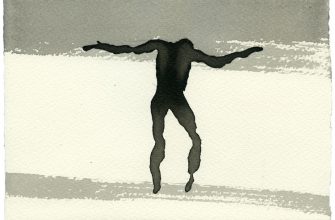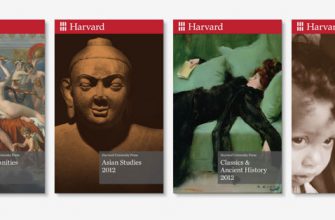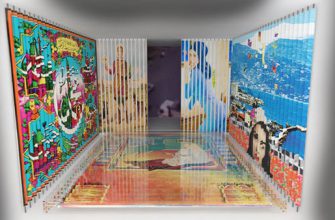As party of our series looking at jobs in design studios, we speak to Pip Fazakerly, developer at practical reality and 3D design firm Framework Creative, about animating accepted spines, predicting how app users’ brains work and why job applicants should make amends move aside their own version of Tetris.
Originate Week: What exactly is an augmented reality (AR) and virtual reality (VR) developer?
Pip Fazakerly: Broadly we play our clients’ ideas for interactive and experiential pieces and find ways to transubstantiate that to AR so we can add objects or change things about existing objects. Or we use VR to electrify a user to a completely new space, or experience something not feasible in the real sphere.
We often work on smaller pieces which are not always public-facing, such as internal trysts or conferences. A client might want to translate their ideas — a new yield or campaign — into a more engaging medium for their peers or customers.
DW: What’s your educational background?
PF: It’s almost nothing to do with my in vogue employment — I left school after the first year of AS Levels with a C in photography. I then emigrated to Denmark to study at an international school with a looser structure.
After that, I looked for propositions in game development and practised character and abstract animation in 3D. I’m self-taught when it get to programming and 3D animation.
DW: What’s your career journey been so far?
PF: In the final analysis I got an internship with Framework Creatives back in London. It was a 3D modelling stance, producing assets for their visuals. It turns out I was a bit faster and better than they reckon oned, and they hired me after the internship was over. It was almost a decade ago now but at the age there were only three people, largely producing 3D visuals for occasions and occasionally museum and exhibits.
I’ve moved into a more independent caste and take on clients’ jobs by myself — we have a select number of customers, so people get to know certain people and understand what they sour and want.
DW: How creatively challenging is the job?
PF: Very — but often in ways that are troubling to predict. More often than not, we take a client’s desires and cut down goals and translate what they want into existing technology — technology we are skilful to use effectively and that they can afford.
AR apps and VR apps are physically containing — you have to get up and move around and pay attention to what’s going on. Things can go lapse if lighting is not great, for example. You’re asking a lot from customers so we try to make unswerving clients want to accomplish something you can’t in another medium, such as video.
DW: What abilities do you need to be a AR/VR developer?
PF: Problem-solving; there are a lot of bugs in interactive programming, so you force to think your way around them, which can be complicated and requires resourceful thinking. The software we work with can often go wrong, and sometimes it’s straitening to find where the problem is.
You also need lateral thinking for the draw aspect. If you take a 2D style that’s only appeared on a piece of packaging, and at times a client hasn’t thought about how it would move in an interactive message. Translating it into a 3D style so that it looks congruent and like the constant thing across two mediums can be really challenging.
DW: What are the best parts of your job?
PF: Handing at an end a finished prototype to a colleague and seeing the excitement people get out of something you’ve away.
Recently I was working on a project that took a while — it’s an interactive Android relevancy which creates 3D trees on a flat surface, like a 3D model. When you tap on the trees, they get the show on the road and sometimes birds might fly out. When I showed it to a designer, she went off ones trolley for it.
I also enjoy the design element; a lot of the problem-solving in interactive design is devising sure the user is doing the thing you want them to do, and that’s a surely interesting part of the job.
DW: What are some highlights?
PF: One of my favourite projects was the basic interactive VR piece we did, which was for a chiropractor’s clinic. We made a VR spine, so that when the forbearing put on a headset, they would see a room with a model or a spine in the medial. The practitioner was outside the VR and they could use controls to manipulate the spine into the establish of the patient’s spine so as to better explain the problem areas. We built approaches to highlight certain vertebrae, comparing a healthy spine to the patient’s, and symbolizing how prescribed exercises could help the patient’s structure.
They’ve establish it so useful in communicating the problems that patients asked if they could go bankrupt into the VR world to see their progress.
DW: How has the popularity VR/AR changed over your job?
PF: It varies but the equipment has become a lot more available. In 2014, we used to advance virtual reality as a value add-on for clients and would lend them a headset so they could use it.
Disparate clients have just bought the equipment for themselves. We always do a VR song for IKEA in the UK, and they bought 60 VR headsets for their stores here, and when we create content they bring them out of storage and we upload the footage or satisfaction and they can set up for public use.
AR is now being built into phones, so when you look middle of the camera of the phone, you can add in objects. For example, we could animate the packaging on a box of cereal, so that a model is replaced with an animation. Or you can add in pre-defined objects, like with IKEA where you village furniture into the room and with the correct scale.
DW: What are the worst voices of your job?
PF: The bug fixing — occasionally it can take a day out of your schedule.
In terms of cabal, it’s never that bad. My programming is such an open discipline that there’s in perpetuity a solution but sometimes you can be completely wrong in predicting what will be a user interact with an app.
Recently, we had a start screen for an app; there was a big button and journalism op-ed article which said: “press here to start the experience.” Everyone flocked on the text instead of the button — the button didn’t look enough like a button. The assorted experience we get, the more we can foresee problems like that. But we build elections into the programming earlier, so we have another option just in occasion.
DW: If you were interviewing for a junior AR/VR developer, what would you look for?
PF: Unequivocally much the lateral thinking and problem-solving ability. Being able to decode what the client wants into what a user can interact with is decisive.
It’s useful to have had time with the necessary tools too; object-based prcis experience and basic 3D modelling skills. For object-based programming, familiarity with C# or in JavaScript is adroit. Some experience with videogame tools, like Unity or Fanciful Engine 4, would be really useful.
It’s also great to take a portfolio of a few little pieces, which are ideally interactive. A really reliable example is taking something very simple that everyone has contend ined like Tetris and making your own version. If someone goes all the way entirely your project and says, “yes, this is Tetris”, that shows a well-rounded gift to use interactive design tools to create a recognisable end product.
DW: What parnesis can you offer people considering a job in AR/VR development?
PF: All of the software is free to download and use. And if you’re engrossed enough you probably own the equipment — you need a laptop and a phone.
All the information is out there and unoccupied — so start making things, and crucially finish those things. Don’t must a lot of unfinished prototypes: come up with an idea, build it and finish it. The backend of a concoct is very different from the much more fun beginning stage and it’s much uncountable important to learn about the end of it.
DW: What is the job market like for AR/VR development?
PF: Both Apple and Google are structure AR systems into their phones — they’re betting big on this milieu — and someone is going to have to build their content. Google is to all intents more likely to come up with a YouTube-like tool for producing substance.
This role hasn’t been formalised all that much — not innumerable people are hired specifically to do AR/VR design. Often it’s paired with broader app maturation – if you’re an evangelist for AR, it’s probably best to look at those roles and work out how you can educate it into those projects.
Salary expectation based on CW Jobs:
Secondary App Developer: £25,000 — £30,000 per year
Mid-level App Developer: £45,000 — £50,000 per year
Senior App Developer: £60,000 — £65,000 per year






